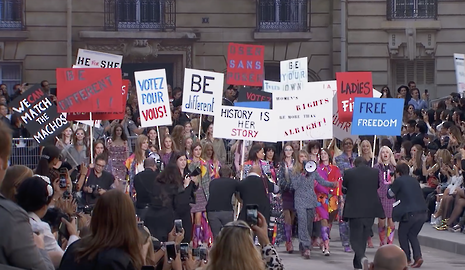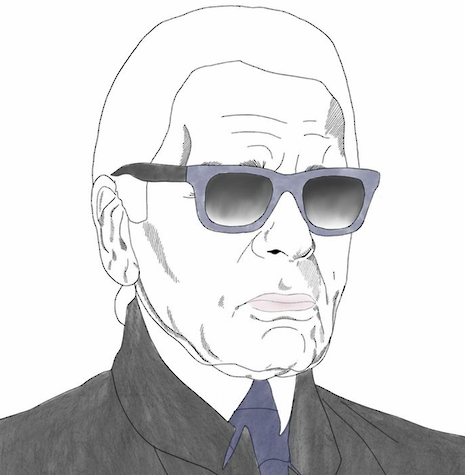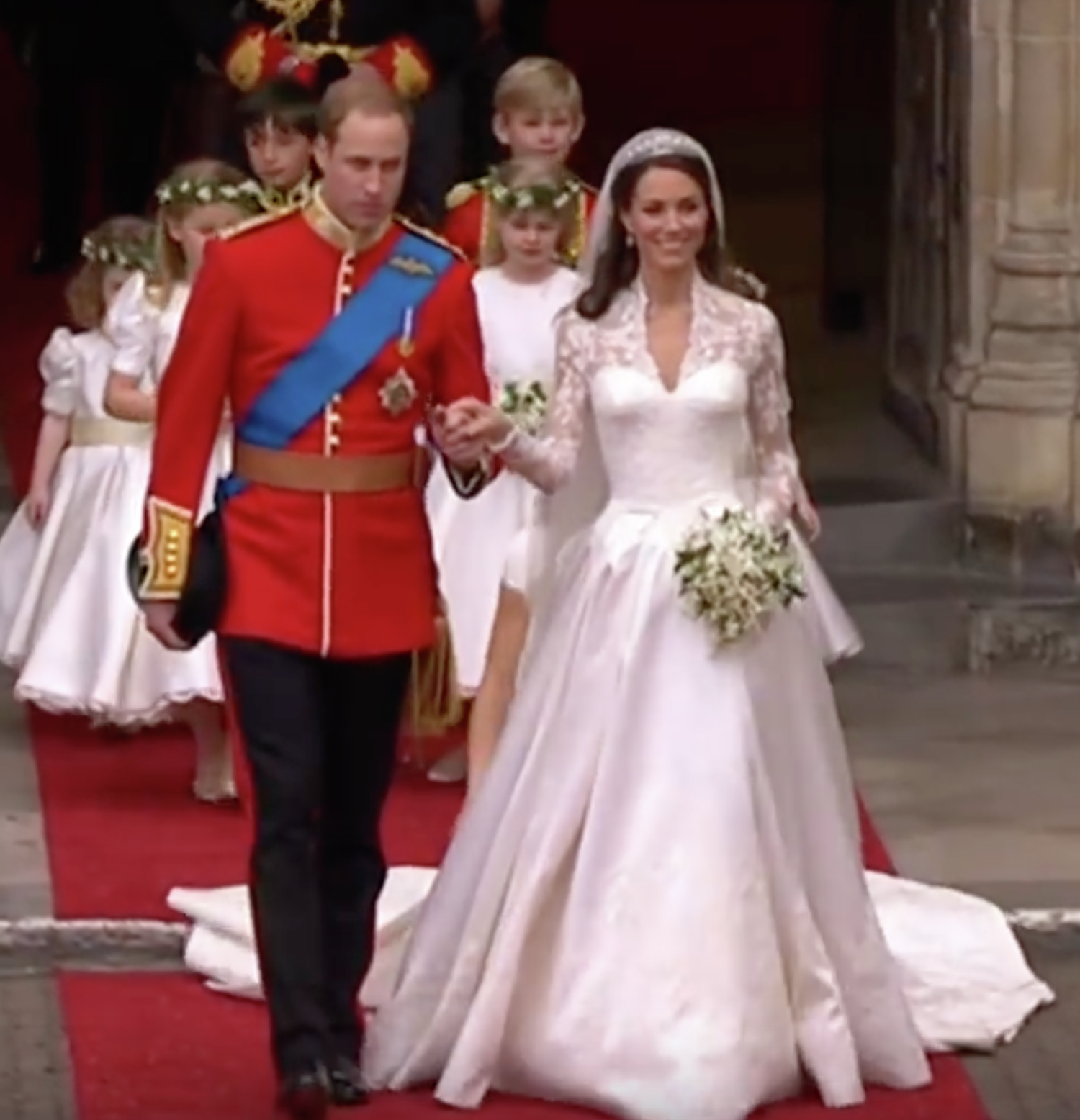I know, the embers of the November 4th bonfires have barely settled, and Christmas has only just made its way into our peripheries, but the year is drawing to a close, and with it, the 2010s. I can’t quite believe it either. Let us, together, pay homage to one of fashion’s finest decades, as we take a trip down memory lane…
2010: The decade began with one of the greatest losses the fashion world has seen: the death of Alexander McQueen, CBE. The pioneer, famed for both his eponymous label and his time at Givenchy as chief designer, changed the course of fashion, winning four British Designer of the Year awards in recognition of his talent. Leaving school with one O-Level in Art aged 16, he surpassed all expectations by earning a place on the MA Fashion course at Central Saint Martins College of Art and Design. McQueen’s first major feat was designing David Bowie’s tour wardrobe from 1996-97, progressing to work with artists like Björk. His penchant for the controversial earned him the nicknames l’enfant terrible and the hooligan of English Fashion. His love for rebellion surfaced during his time at Givenchy, where he called his first couture collection “crap”. This didn’t hinder him from becoming one of the most widely praised designers of the decade, and his legacy lives on in his gothic-chic fashion house.
2011: The Hooligan of English Fashion proved that he was truly immortal when the fashion house of Alexander McQueen designed one of the most famed gowns in history, let alone this decade. The Royal Wedding was, whether you support the monarchy or not, an event that reached the ends of the earth, and Kate Middleton’s wedding dress was a hot topic of conversation for years to follow. Sheer lace sleeves became an enduring wedding dress trend, but the dress itself represented more than that: it was a great celebration of British fashion, and an honouring of Alexander McQueen.
2012: From the regal to the rebellious, how can we forget a crucial moment of our teenage years? 2012 was the year Miley Cyrus left her childhood behind her, as she cropped and bleached her hair, and went on a style evolution. The Disney Channel princess became the reckless 20-year-old that swung around on wrecking balls. It was a moment of pent-up and long-awaited self-expression that inspired masses to ditch their societal pretences, and embrace the unique and defiant.
2013: This was the year of, as the New York Post so aptly put it, ‘designer musical chairs’. It most certainly was a year of swapping and changing, as over 5 designers left their posts at their respective fashion houses. Alexander Wang, known now for his dark, oftentimes monochromatic collections, moved to Balenciaga, replacing Nicolas Ghesquière. Ghesquière went to Louis Vuitton to take the place of Marc Jacobs, who began developing what is now a much loved fashion house in itself. Marco Zanini left Rochas for Schiaparelli, whilst Alessandro Dell’Acqua took his place. Well, that was certainly a merry-go-round.

2014: Here we have our first taste of female empowerment, which saturates the end of the decade. Chanel used their Spring/Summer Paris Fashion Week show to promote the rights of women, and the catwalk became filled with determined-looking models marching down the catwalk-turned-street in solidarity. Cara Delevingne opened up the show, and later held up a giant mega-phone. Posters saying ‘History is her story’ and ‘Women’s rights are more than alright’ were unveiled at the end of the show. This was the year that truly transformed the discussion over gender inequality, and Chanel certainly contributed to it.
2015: I’m sorry, but the Kardashian-Jenner clan had to feature somewhere in this list; after all, they are all extraordinarily influential names in the fashion world. In a bold and defiant move, Caitlyn Jenner took to the cover of Vanity Fair, with ‘Call me Caitlyn’ emblazoned for all to read. This was an important move from both Caitlyn and Vanity Fair, and marked the official moment she revealed her identity to the world. It’s a cover we won’t be forgetting any time soon.
2016: Jaden Smith: an unlikely candidate, but a worthy one nonetheless. Let’s not forget his iconic shoot with Louis Vuitton, as he graced their Womenswear Spring/Summer 2016 collection. This was the year fashion began to overtly challenge our ideas about gender, and Jaden certainly rocks the biker jacket/skirt combo. In other 2016 news, Maria Grazia Chiuri made her debut as the first female creative director of mega-house Dior. This was the moment her famed ‘We Should All Be Feminists’ (a quote taken from the title of Chimamanda Ngozi Adichie’s essay) t-shirt entered the market, and the second time on this list that we’ve seen women’s rights being promoted through the use of fashion. Sure, we should be able to be feminists without spending £600, but the sentiment is there.
2017: This was the year of Adwoa Aboah and Edward Enninful. In April 2017, Enninful was announced as the new editor-in-chief of British Vogue, one of the most coveted positions in the fashion world. His first cover was graced by none other than Aboah, who later won the Model of the Year Award, presented by the British Fashion Council. Aboah dominated the industry, and still continues to do so, focusing not only on fashion, but increasing awareness of mental health issues and addiction through her online forum Gurls Talk, using her own experiences as a gateway into a broader discussion.
2018: This was a fundamental year for advancing movements that empower women. As the tolerance of sexism and abuse in Hollywood and later the world was exposed and condemned, the fashion industry facilitated displays of unity amongst and solidarity with women by supporting the ‘Time’s Up’ campaign. The red carpet was dominated by influential actresses and actors wearing black to demonstrate their support for the campaign. In fact, the wearing of black garments became the poster for the campaign itself, providing a recognisable and powerful image that catapulted the campaign to new heights. The image of the world’s most coveted and renowned actresses and actors standing together in black garments is extremely powerful, and the choice of black in particular was captivating and unyielding, much like the campaign’s approach.

2019: This year has been a whirlwind, to say the least. Moschino taking inspiration from Pablo Picasso, Jared Leto carrying his own head as an accessory to the Met Gala; if you can imagine it, it’s probably happened. But, we started this list with a death, and not to be morbid, but it appears as though it’s ending with one too. We lost a larger-than-life figure this year, Karl Lagerfeld. Creative director of Chanel for what feels like forever, Lagerfeld shaped the industry in countless ways, from his altering of the classic Chanel silhouette, to his incorporation of grunge and colour in his runway shows. But his legacy will not be entirely positive: following his death, countless comments highlighted his misogyny and repeated evident prejudice against body types that weren’t considered the stereotypical model figure. In any case, fashion has lost one of its biggest contenders.
‘What can we expect from 2020?’, I hear you ask. Well, activism has certainly played its role in closing out this decade, so we can only hope for more. The sustainable fashion movement has gathered an astounding following over the past couple of years, and with shoppers altering their spending habits drastically, we can only predict a solid change in garment production. Here’s to more colour, more diversity, and less bereavement.

